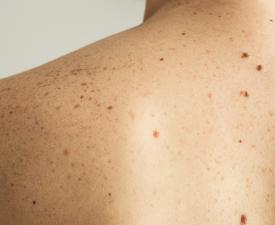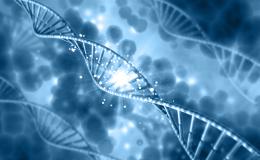Is Skin Cancer Hereditary?
May 11, 2021
After a long winter, particularly in the colder northern latitudes, spring provides a welcome return to the sun, warmth, and inevitably, more outdoor activities.

Many schools, health departments and healthcare facilities are promoting skin cancer awareness to help reduce environmental risk factors, such as ultraviolet (UV) light exposure. In recognition of Melanoma and Skin Cancer Awareness Month this May, we are focusing on hereditary forms of skin cancer, their prevalence, and measures you can take to prevent skin cancer in both you and your loved ones.
Skin cancer is the most common form of cancer in both the United States and the world. The disease can be divided into three major types: melanoma, basal cell carcinoma (BCC) and squamous cell carcinoma (SCC). Melanomas are skin cancers that originate in melanocytes, the cells in the skin that produce melanin (pigment). Likewise, BCCs start in basal cells of the skin and SCCs begin in the squamous cells. Melanoma is the most serious of the three types of skin cancer. Both BCC and SCC skin cancers are considered nonmelanoma skin cancers.
Both melanoma and nonmelanoma skin cancers can run in families. A primary risk factor for skin cancer is UV exposure. Exposure to UV light may be similar between members of the same family and may contribute to multiple family members being diagnosed with melanoma and/or nonmelanoma skin cancers. In some cases, however, skin cancers are hereditary and an increased risk of developing the disease can be passed from parent to child. It is estimated that roughly five to ten percent of melanoma cases are hereditary and caused by a pathogenic gene variant, or change in a gene sequence.1 Several hereditary syndromes are also associated with the development of nonmelanoma skin cancers.2
There are a few characteristics that hereditary cancers often have in common. Generally speaking, hereditary cancers may be diagnosed in people at an unusually early age, can occur bilaterally and/or more than once, and might be present in one or more family members. Because hereditary cancers are passed genetically through pathogenic DNA variants from parent to child, hereditary cancers tend to run on only one side of the family. The same is true for genetic melanoma and nonmelanoma skin cancers. In fact, up to 40% of cases of hereditary melanoma are caused by pathogenic variants in the CDKN2A gene.2 Variants in the CDK4, MITF, BAP1 and BRCA2 genes have also been associated with hereditary melanoma.2
There are many risk factors for melanoma and nonmelanoma skin cancer. Risk factors for these diseases include:
- Fair skin
- UV light exposure, including the use of tanning beds
- Experiencing one or more blistering sunburns
- Personal history of precancerous skin lesions
- Prior skin cancer diagnosis or a family history of skin cancer
- Lowered immune response
- Genetic disorders, including xeroderma pigmentosa and Gorlin-Goltz syndrome
- Radiation exposure
- Advanced age
- Arsenic exposure
- Many and/or abnormal moles
- Living in an area with more sun exposure, such as higher elevations or close to the equator
Importantly, it is possible to develop melanoma on areas of the body that aren’t exposed to UV light. Hidden melanomas are more common in people of color and are found in places where people are less likely to look for lesions, such as between toes, under fingernails, and on the palms of your hands, soles of your feet, genitals and scalp.
Harboring a pathogenic variant associated with melanoma or nonmelanoma skin cancer increases an affected person’s likelihood of eventually developing the disease during their lifetime, but that doesn’t necessarily mean that an affected person will develop skin cancer. While possessing a pathogenic DNA variant (and the genetic risk the variant confers) cannot be changed, reducing sun exposure can decrease every individual’s risk of developing melanoma and nonmelanoma skin cancers, regardless of their genetics. A yearly skin check, performed by a dermatologist, is often recommended for people with an elevated risk of skin cancer in order to diagnose disease at the earliest possible stage. Additionally, people can proactively monitor moles and other skin lesions on a monthly basis for any changes that may require clinical evaluation.
Both melanoma and nonmelanoma skin cancers have a high 5-year survival rate, or percentage of people that survive 5 years after diagnosis, when the cancer is caught in the early, and most treatable, stages. Kailos Genetics developed the comprehensive ExpedioTM Hereditary Cancer Screening test to screen 33 genes, including CDK2NA and BRCA2, associated with hereditary melanoma and other cancer syndromes to provide patients and their physicians actionable information regarding a patient’s pathogenic variants and the increased disease risk each variant confers. Click here to learn more about ExpedioTM, or contact us with any questions you may have regarding genetic screenings.




